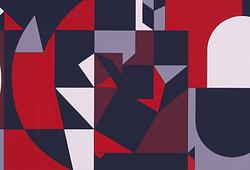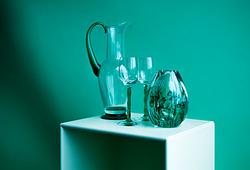Albert Edelfelt
"FROM THE PORT OF COPENHAGEN I".
Sign. Oil on canvas, 60X94 cm.
From the port of Copenhaguen I
Literature: B. Hintze, A. Edelfelt, 1942 catalogue number: 556 ,1953.
Reproduced picture Illustreret Tidende Khavn, 24.2.1918, p. 97. (The picture has been cut)
Exhibitions: Edelfelt exhibition in Helsinki 30.11- 9.12 1890.
In connection with the Paris World Exhibition 1889, Danish newspapers reported that Albert Edelfelt had been commissioned by the Russian emperor Alexander III for a painting of the port of Copenhagen. Since 1881 the Imperial family had bought several works by Edelfelt (Berta and Capi, Under the birches, In the nursery). He also painted the double portrait of the Imperial children Michail and Xenia in St. Petersburg, in 1882. Whilst working on the portrait of the children, Edelfelt became acquainted with the Empress Maria Feodorovna, who was born princess Dagmar, the daughter of King Christian IX of Denmark. Edelfelt was very pleased and flattered by the opportunity to speak Danish with Dagmar. The commission that he had received seems to have been vaguely defined: the theme was to be the entrance to the port of Copenhagen. Since the painting was to be hung in the Imperial Palace in Helsinki (today the Presidential Palace), Edelfelt started work with a series of sketches and studies of the port of Helsinki. This was the first time that Edelfelt worked with a maritime motif, and he had no specialized knowledge about the kind of properties that were needed. From a letter to his Danish friend Pietro Krohn it became clear that Edelfelt intended to spend a couple of weeks painting at Holmen in Copenhagen. Krohn applied for permission for Albert Edelfelt to paint in the harbour. In a letter to Krohn, written in Helsinki on the 6 of September 1889, Edelfelt says: “Naturally, I won’t be able to complete the painting, so I’ll have to paint some of the figures in Paris, but photographs and sketches ought to be of some help/...Now I have to paint this work anyway, in order to make some money”. Later that same month, Edelfelt and his wife, child and the wet nurse arrived at the villa owned by the Krohn family, in Rosenvang, in the Danish capital. Edelfelt started work with a series of plein-air sketches. In order to endure the cold, he borrowed a fur coat for painting and a pair of spats from Frants Henningsen (1850-1908). The preparations included colour sketches and photographs of the models and motifs. Work on the actual paintings was then completed in the studio of a marine painter in Paris. The necessary props, such as stays, blocks, sails, flags and miniatures of ships, could be found in the studios of marine and maritime painters. In Paris, Edelfelt employed at least one model for The port of Copenhagen I.
Once the sketches were completed in the autumn of 1889, Edelfelt showed them to the Imperial family who was visiting relatives at Fredensborg in Denmark. He had created two different motifs on the navy frigate Sjaelland’s deck. The first motif was painted on the afterdeck, with Holmen and the city skyline in the background. The second motif was of the view from the foredeck, with the bay of Tre Kroner and the Imperial yacht, Derjava. But instead of choosing one motif, the Imperial family chose two. The Empress wanted the Danish motif, with the view of Holmen and the skyline of Copenhagen in the background, which had been painted on the afterdeck of the navy frigate Sjaelland. The Emperor chose motif that featured his yacht, Derjava. In both motifs Edelfelt had painted the respective flags; in the Empress’ painting there was a Danish flag The Dannebrog with a white cross against a red background), whereas in the Emperor’s painting both the Danish and the Russian St. Andrew’s flags ( a blue x against a white background) are shown.
The painting that is now on sale has belonged to professor E.R. Neovius in Copenhagen. According to the information in Bertel Hintze’s catalogue, this painting is the same size as the painting commissioned by the Emperor for his palace in Helsinki. This assumption is based on the commission: “The Emperor wants a big version of the one with the Derjava, for his palace.- The Empress wants the other one in the same size” (In a letter to his mother, dated 30.09.1889). By ”size” Edelfelt may have meant “with the same proportions” and not the actual size. The Emperor’s painting, which was to be hung in the palace, was big (150x95 cm). A marine painting was often created as a panorama landscape. The port of Copenhagen II and Study of “The port of Copenhagen III” (Hintze 561) are almost identical in size, with a width of 1 meter. Both of these painting remained in Edelfelt’s possession and are probably the paintings that Edelfelt exhibited in Helsinki and in Paris 1890-92, after the Emperor and Empress had received the works that they had commissioned. It therefore seems that Hintze may have combined the wrong paintings with the wrong exhibitions. Edelfelt has created a number of variations on his popular themes and was often disappointed when collectors wouldn’t let him to borrow works for important exhibitions like the Pais World Exhibition in 1889. This would explain why Edelfelt had decided to keep two of the variations. According to Saimi Neovius, the Empress would have preferred a sunny motif, rather than one with an approaching thunderstorm, though why the motif was painted in ¼ scale remains unclear. Professor Neovius and his family had moved from Helsinki to Copenhagen in 1905, the year of Edelfelt’s death. They may have bought “From the port of Copenhagen” before the move to Denmark. It is impossible to say whether the comments about the Empress’ taste are true or not. Edelfelt was not particularly fond of Mrs Neovius, despite the fact that the couple had bought a pastel, Parisian model , in 1885. (This work can be seen in the background of the family portrait painted by Axel Gallén in 1886).
When Edelfelt was working on the series of sketches in Copenhagen during the autumn of 1889, the weather was cold and windy. He sat on the deck of the frigate Sjaelland, which was docked at a quay in the harbour, and painted. Sjaelland had been launched in 1858, and had not been used by the navy since 1885. Edelfelt used seamen from the docks as models. Edelfelt wrote to Louis Pasteur’s son that the autumn storms lashed the decks without mercy and that his easel and the canvas were constantly turned over. On really bad days the rain streamed over Edelfelt’s numb fingers and even the oil paint congealed on the palette. On some days Albert Edelfelt had to interrupt his work and take cover in the cabin of the Sjaelland. The final work on the paintings was done both in Paris and in Edelfelt’s studio at the Ateneum in Helsinki. At this time Edelfelt was also completing the painting Christ and Magdalen. During one week (30.11.- 9.12. 1890) the finished Copenhagen paintings were exhibited on the third floor of the Ateneum. The choice of location was understandable since the works had been painted there.
I am assuming that the painting which is now on sale was part of this exhibition, which would make possible to date the work to 1890. The painting bought by the Empress, “From the port of Copenhagen II”, was much smaller (Hintze no. 558, today in a private collection) and signed and dated 1890. Thus “From the port of Copenhagen I” is the main work of the series of variations created for the Empress. Hintze writes: “The magnificent scenery filled him with enthusiasm for the project. In the first, big study which shows the view across the Channel of Holmen, as seen from the frigate Sjaelland’s afterdeck, the sun pierces the dark storm clouds with dramatic force and the landscape is swept in a heavy, damp atmosphere where the view of the city in the background, is swallowed up by an almost impenetrable fog. The struggle for supremacy between light and darkness results in a description of nature of a sensual intensity seldom seen in Edelfelt’s production”. Edelfelt felt most at home in cities, he often painted in a studio and worried about catching cold. Only rarely did he struggle against the elements the way he did in Copenhagen where, dressed in furs like an Eskimo, he fought to capture the atmosphere of a plein-air motif.
Exhibitions
Edelfelt's exhibition, Helsinki 1890.
Literature
B. Hintze, Albert Edelfelt, no. 556. Illustreret Tidende, Khavn 24. II 1918, p. 97. Hbl 12 XII, 1889.
Designer
Albert Edelfelt is considered one of Finland's greatest artists of the 19th century. After studying in Antwerp and Paris, he settled in France, where he received several exhibition medals and was honored with the Legion of Honour, notably for the famous portrait of Pasteur. He was also summoned by Alexander III to St. Petersburg to portray the Tsar's children. Edelfelt often returned to themes from Finnish history, such as his illustrations for 'The Tales of Ensign Stål.'
Edelfelt's works display an artistic breadth that ranges from everyday life in the Finnish archipelago to prestigious society portraits and historical paintings. In his depictions of everyday life, he managed to merge traditional academic painting with the new techniques of plein air painting, which achieved great success in France. The painting 'The Funeral of a Child' was awarded a third-class medal at the annual Salon in Paris in 1880, marking the most significant international success for Finnish painting at the time.
Albert Edelfelt is primarily represented in Ateneum in Helsinki, but also in the National Museum in Stockholm, as well as museums in Copenhagen, Luxembourg, and Paris.
Read more























































